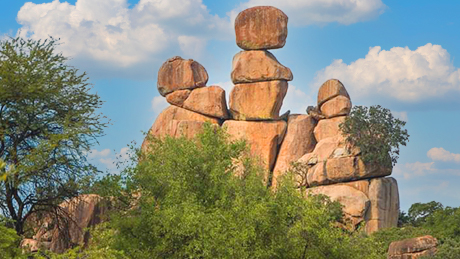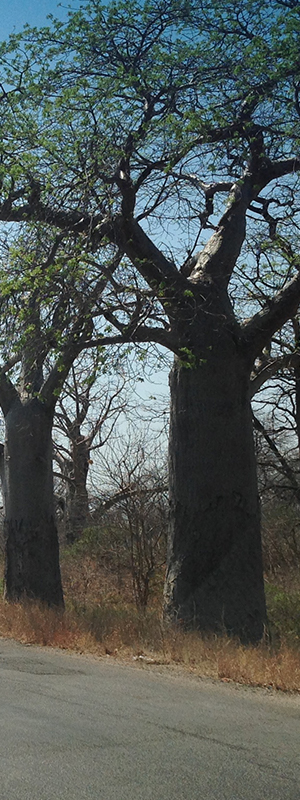Menu

The Zimbabwe of today is characterized by a diverse system of cultural beliefs. Whether it’s a belief in God, known in Shona as Mwari or uMlimu in Ndebele, ancestors, superstition or any other supernatural phenomenon. Belief systems can define, identify or distinguish communities based on what they stand for.
With the arrival of European Missionaries like David Livingston around 1859 churches began springing up that introduced locals to Christianity. Christians, as per belief, say Jesus is the medium between them and God. A belief which negates and disavows the need for traditional ancestral worship.

Notably Christianity introduced the world’s best selling book, the Bible - which provides guidance and direction for their belief system. Church buildings provided opportunity for believers to gather and be taught or preached to. The bible is regarded as the ultimate authority that lays down and reinforces a set of rules by which believers are guided.
By converting to Christianity, those Zimbabweans would be turning away from an ancestral worship system that goes back hundreds of years, whose core focus was in honouring the dead by welcoming their spirits back.
Were the missionaries right by denouncing the ancestors? Were they telling the truth when they said the dead are dead and can not help the living?
In her book, Nehanda, Yvonne Vera on page 27 states; “The dead are not dead. They are always around us, protecting us. There is no living person who is stronger than the departed. When the whole village prays together, they pray to the ancestral mudzimu of their clan. When we pray to mhondoro for rain, we are praying to the guardian that unites the whole clan. This is one of the strongest spirits of the land.”

This had been passed on from generation to generation. Forefathers prayed to their forefathers for protection, long life and blessings. They did this by calling out clan names while pouring traditional beer and snuff (pfuko) on the ground. Pleasing their ancestors then led to their prosperity; so they believed. If they sensed the ancestors were displeased they would hold rituals to appease them.
Speaking to a 31 year old woman, who wished to remain anonymous she revealed that ancestors do exist and so are their supernatural powers. When asked why she's so sure about their existence, she revealed that her mother was a Hossana - someone who communicates with the ancestors and conveys or interprets the message to the living.
“Amadlozi do exist, it's bad now because Africans have decided to do away with them following other people's religion. They exist and protect us all the time.” Said she. “My mother had amadlozi and I would see them manifesting through her. A male voice would take over and speak with anyone present. The voice would enquire about the health of the whole family, it would go further and warn about the oncoming danger and later give preventive measures to protect us. She was a Hossana and when she was alive everything was perfect in our lives for she would from time to time offer something to the ancestors in exchange for our well-being and good life.” She went on to display her displeasure of how the new generation disrespects ancestors by not acknowledging them and terming them demons.
Seemingly a minority of the population in Zimbabwe still believe in African Tradition Religion (ATR). According to the 2017 Inter Censal Demography Survey by the Zimbabwe National Statistics Agency, Protestant Christianity dominates the population with 69.2% of Zimbabweans under their wing, followed by Roman Catholic that is at 8.0%. Only about 4% of Zimbabweans still believe in our forefathers religion that is ATR. Buddhism, Hinduism and Judaism adds to 1.2% of the Zimbabwe population while the unspecified number is at 8%.
What was it before colonization?
Like many other African communities, Zimbabwe had a firm monotheistic faith rooted in the belief of one supreme creator. Before Christianity, the Shona speaking people and Ndebele speaking people believed in channelling their prayers to the Supreme Creator, Mwari (God), through family ancestors. When trouble and misfortunes befell the community, they consulted a spirit medium, N'anga, for advice. The spirit mediums were believed to have direct contact with the ancestors.
Great Zimbabwe and Matobo Hills which inspired the San artists' inspiration became the spiritual shrines of the Mbire people and Ndebele, respectively. When the Mbire-ruled Rozvi empire was overthrown by Mzilikazi during the fifteenth century, the Shona people continued to visit their shrines for guidance and protection. Each shrine had an Oracle- the voice of Mwari. The religion was so powerful that it spread across Limpopo and was taken by the Venda community.
This religion attained its spiritual greatness in the Matobo Hills area. This eventually led to their spiritual Mwari known as Mwari vemaMatonjeni - God of the Matobo and was later adopted by the Ndebele who even today still believe in the sacredness of Matobo Hills. The Ndebele called their God, uMlimu, provider of rain and the nature guardian. They sought divine intervention whenever calamity threatened. They did this through priests and oracles. It was through their belief in ancestors that they went against the Europeans in 1886.
How is the society of today?
A glimpse of the cultural trend today can be gleaned by listening to popular music by the late Oliver Mtukudzi or Thomas Mapfumo among others. M’tukudzi seemed to sing about cultural wisdom and in some songs sang to God the Creator. The late singer Chiwoniso Maraire embraced one of the oldest known instruments mbira, singing about ancestors and their effect on every day life. Another Mbira maestro, Stella Chiweshe has her music rooted in cultural and ancestral vibes.
Christianity and other western cultures have spread in Zimbabwe over the years. Muslim, this religion has spread across the world becoming prominent and acceptable in Western countries and cultures. Zimbabwe also has mosques that can be found in all major cities. There are estimates of 75 000 Muslims, 18 Mosques in the city of Harare, 8 in Bulawayo and a number of mosques in small towns.
